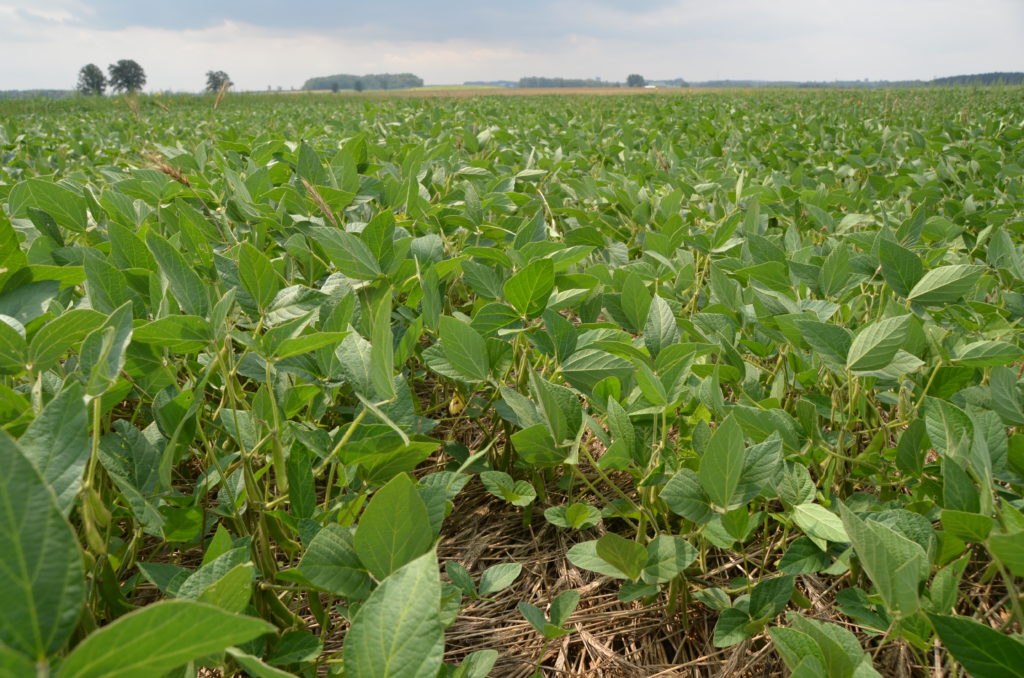Forage soybeans are not normally recommended as an emergency forage. Forage soybean production has a steep learning curve. Successful producers started with a small acreage and took several years to learn how to manage this crop.
Whole unroasted soybean seeds pose a risk of ammonia toxicity. Limit to 2-4 lbs/head/day.
Protein exceeding animal demand will require feed energy for excretion. An unbalanced ration may cause animals to lose condition.
Graze
- Up to R5.
- Can cause bloat.
- Stubble has very low feed quality; increased risk of overconsumption of unharvested raw beans.
Dry Hay
- Harvest between R3 and R5.
- Takes longer to dry than alfalfa, which increases risk of mouldy hay
- Use a mower-conditioner to speed up drying, ted early to minimize leaf shatter.
- Can cause bloat, feed with grass/cereal forage.
Silage (Bag, Bunker, Tower, etc.)
- Harvest between R3 and R6.
- Does not pack well – makes excluding air difficult. Chop to 3/8 inch.
- High oil + moderate sugar = buffer against pH drop. Use an inoculant.
- Improve fermentation by either ensiling silage corn:soybeans at 1:1 ratio, or adding at least 10% ground corn grain or molasses on a dry matter basis.
- Limit to 20% of ration.
Baleage
- Not recommended due to difficulties ensiling.
- Baleage relies ONLY on airless environment to preserve crop, too dry for complete fermentation and large pH drop.
- Likely to spoil.
More Information:
Ensiling Soybeans, Province of Manitoba
Soybeans for Hay or Silage, University of Wisconsin
Soybeans for Grazing, Hay, and Silage, University of Florida
Making Soybean Silage, Fieldcropnews.com
Soybeans as a Forage Crop, Fieldcropnews.com
Harvesting Drought-Stressed Soybeans for Forage, Michigan State University
